 |  Westminster Iron Works |
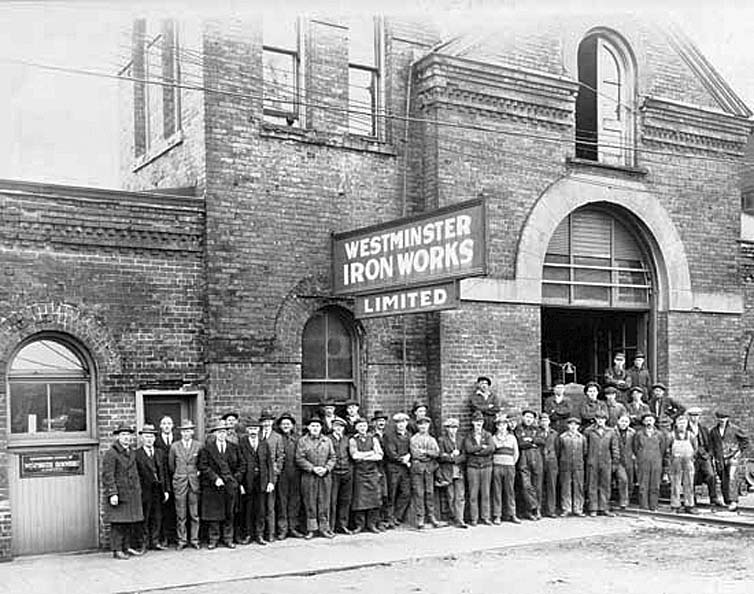
The Westminster Iron Works Company founded in the late 1800's initially produced ornamental iron works such as fences and stairwell banisters.
In 1920 they produced their first locomotives naming the product line "Tugaway".
One of the early Tugaways constructed for use on a pole road rests outside the front of the Westminster Iron Works facility in New Westminster. The machine is unidentified but may be the Tugaway that was sold to the Lee Hand Logging Company.
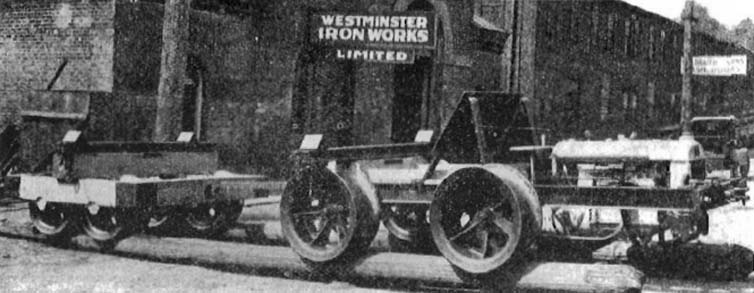
Another version of the Tugaway but for use on steel rails hauls logs for the Rand Sawmill in the Fraser Valley. The protective barrier behind the driver is supposed to offer protection from a shifting log but one wonders how effective it might be.
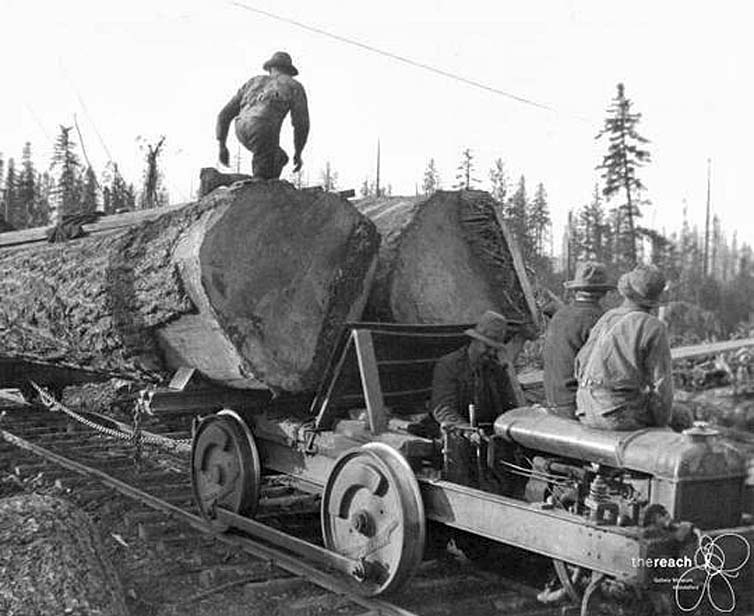
A later development by the company is this Tugaway. It's basically a Fordson Model F Tractor, without wheels or steering gear, mounted on a steel frame. The tractor axle powers the two rear steel wheels while connecting rods drive the front pair.

These gasoline locomotives, advertised as "Kerosene Locomotives", were popular with small logging operations as described by one company as follows: "The Tugaway gasoline locomotive which we purchased from you in April, 1920, has given us complete satisfaction in every way. Our average haul to the mill is one mile, we can bring in 30,000 feet a day over a 42 inch gauge track with 20 pound rail, and even with such light rails we can negotiate an eight percent grade. One of its special features to our mind is the light running expenses, as for a full day's run of 9 hours we use 8 gallons of coal oil and about one quart of oil. The cost of repairs and upkeep is also light."
The Tugaway used at the Mission operation used "log bunks" such as these.
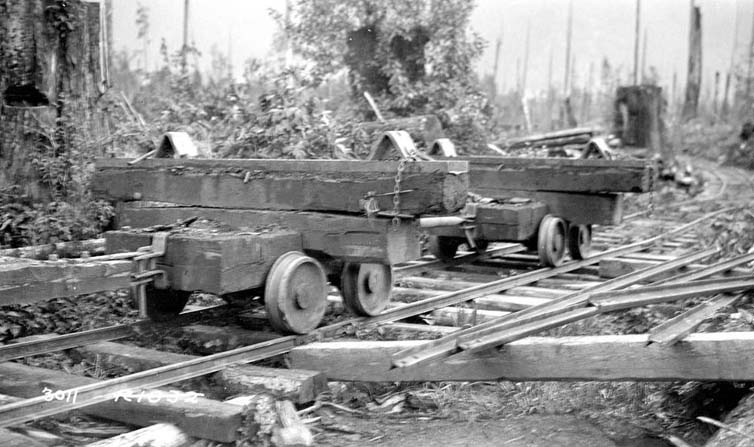
Westminster Iron Works advertised their Tugaway locomotives as a "Kerosene Locomotive" which was available in standard or various narrow gauges being used by several companies in the Fraser Valley.
This O Scale model of a Westminster Iron Works Kerosene Locomotive is available from Wiseman Model Services .
.
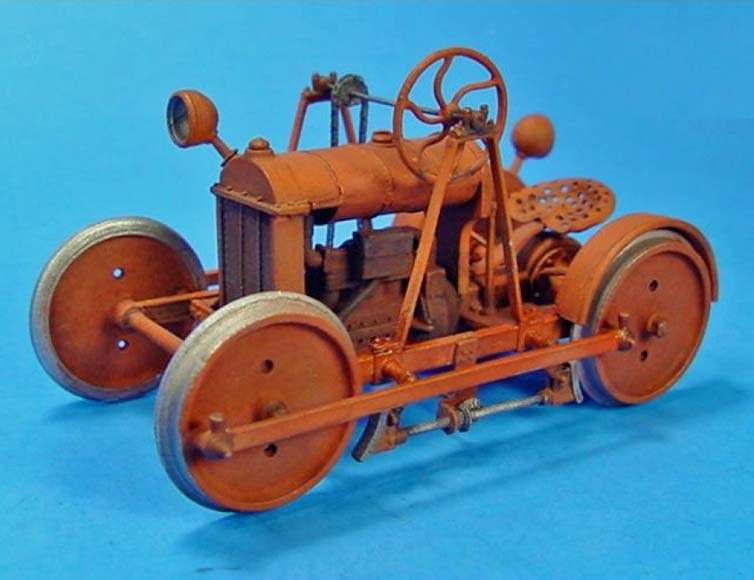
The Jordan River locomotive was produced sometime during the 1930s for use on the Jordan River railway.
Suspiciously, the cab looks like it was removed from a Fairmont speeder.
In 1971 as the railway was abandoned after the installation of a new power plant on the west side of the river, it was stored at the BC Forest Museum (now the BC Forest Discovery Centre) in Duncan, Vancouver Island.
The owner at that time being BC Hydro who had acquired it from the BC Electric Railway Company when BCER was expropriated by the province.
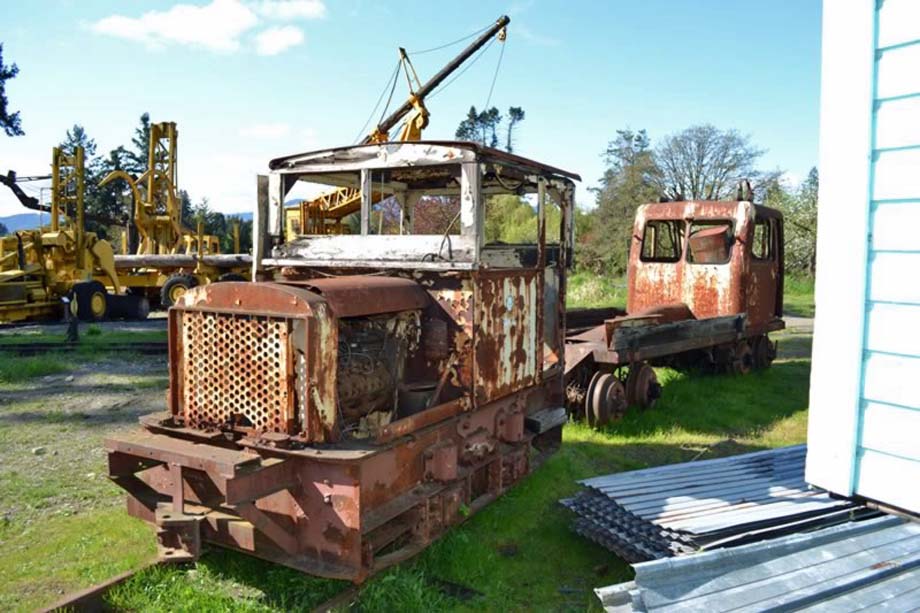
The locomotive remained at the Duncan site until 2013 when BC Hydro decided it should be donated to the Sooke Region Museum with the possibility of a more appropriate placement at Jordan River.
Loaded on a flatbed truck, along with the smaller Plymouth 4 wheel gas-mechanical, it was moved to the Kaltasin Works Yard in Sooke for refurbishment before display.
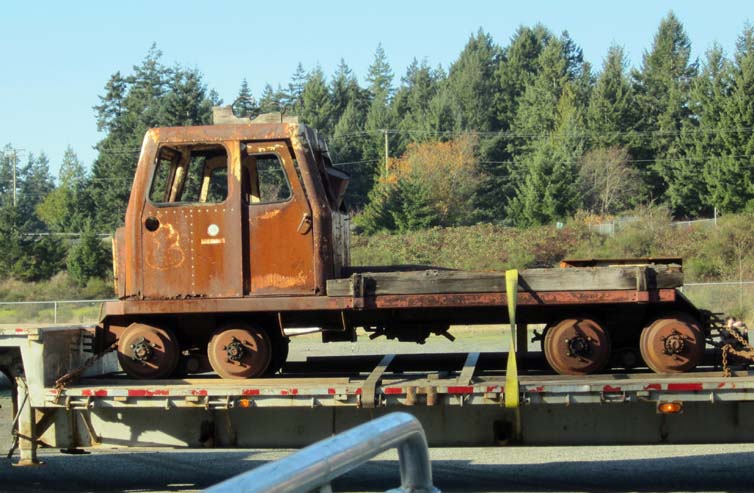
To date, 2023, since restoration was completed in 2019 the locomotive currently resides unprotected outside in the open near the museum next to Highway 14 in Sooke as shown below.

